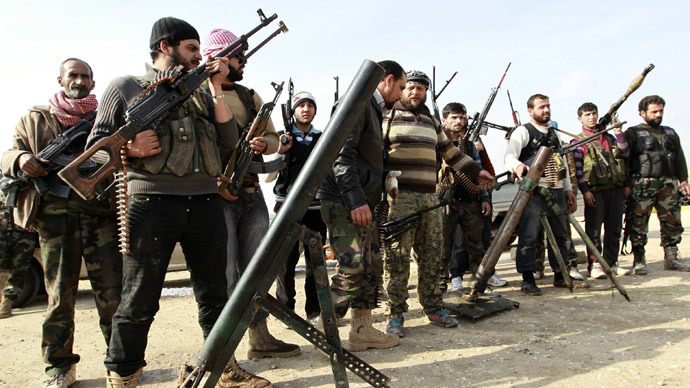 |
| Hey, you guys want some rifles and mortars? |
After our collective experience under the criminal Bush/Cheney administration, it seems unlikely that we'll see American combat troops used in significant numbers anytime soon. In fact, it's hard to visualize a situation where they would be used. So, as long as the infantry is off the table, the US is left with three arrows in her intervention quiver.
The Syrian civil war provides a fascinating insight into how these policy choices play out against the current political, economic and diplomatic backdrop. Despite the fact that there was very little in the way of good choices, the American knee-jerk cry of 'we must do something' continued to echo through the halls of power and the pages of punditry. It's an interesting bit of fallout from America's military history, but in the US, the leadership is always pressured to act, even if all the options for action are bad. America's political leaders pay a much higher price for inaction, even when there is no demonstrable US interest in the conflict. So once the Assad regime used chemical weapons, the Obama administration saw that as a chance to 'do something'. Three days of air and missile strikes and the political pressure to act would be relieved, at least for a while. When the air power option evaporated, we were left facing the 'arm the rebels' option.
Now, if you've seen pictures or videos from the Syrian civil war, this might strike you as odd. The various rebel factions do not seem to be struggling with a lack of weaponry. Indeed, as they have overrun hundreds of Syrian military bases and depots, they have collected anything and everything that goes bang. One looks at those pictures and wonders "arm them with WHAT, exactly?" These are irregulars, guerrilla fighters - they can't use helicopters, artillery or tanks. They would love to have the latest and greatest MANPADS, but because the US is highly sensitive to the risk of them being transferred to Islamic groups like al Nusra and ISIS, it's unlikely that we would provide them. The same with AT-4 class anti-tank missiles.
The other side of that option, the 'train the rebel fighters' side, is even more problematic. Since the US won't put Special Forces operators on the ground in Syria, the training occurs in Jordan. But the fighters are actively engaged in a civil war - they can't just pull their troops off the battlefield in Syria and send them to Jordan for months of 'training'. That leaves the US operators having to try to 'train the trainers' without being able to support them when they actually take troops into combat.
So let's be clear. The entire process is a sham - we're spending money in order to avoid spending lives, and we're doing something pointless because everyone agrees we have to do something. We're arming the fighters with weapons they already have because we're terrified that anything they could use to do serious damage would end up in the hands of Islamists, and we're training people who aren't involved in combat in the first place. Meanwhile, Iran, Turkey and Iraq have no such limitations on their operations, and the battle comes down to a series of atrocities and counter - atrocities.
There's nothing the US can do, and there's nothing the US SHOULD do...
...
There's nothing the US can do, and there's nothing the US SHOULD do...
ReplyDeleteBut like the sorcerer's apprentice, we just can't stop ourselves from making things worse.
~